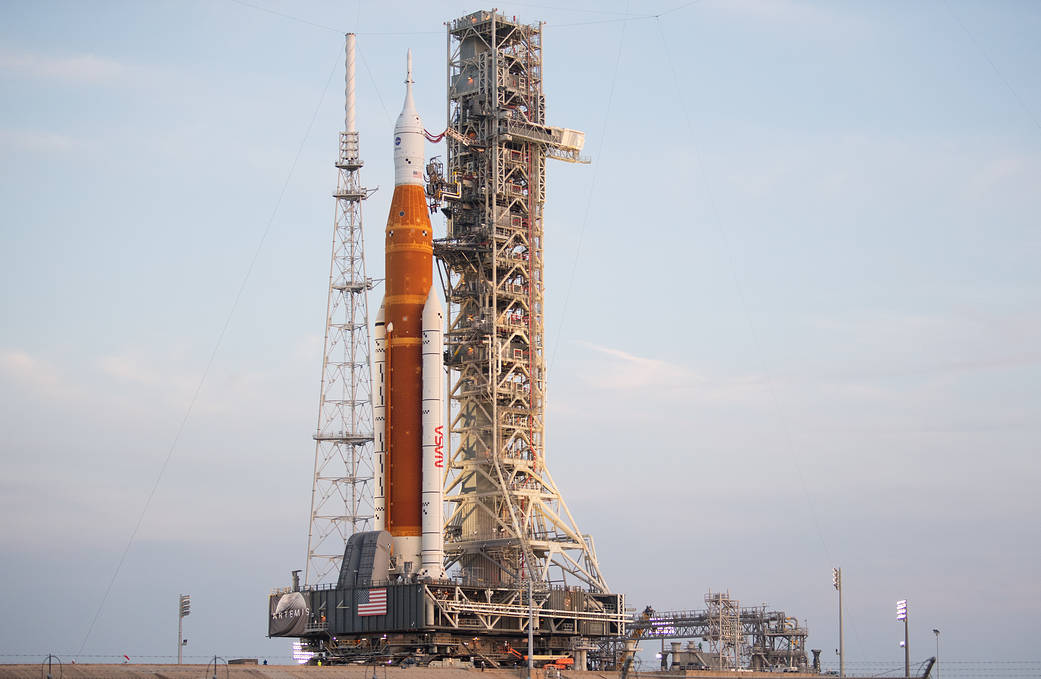
Nasa has announced that it plans to conduct tests of nuclear-powered rockets that might transport astronauts to Mars at incredible speeds.
Together with the Defense Advanced Research Projects Agency (Darpa) of the United States government, the agency stated on Tuesday that it plans to launch a nuclear thermal rocket engine into orbit by 2027.
The goal of the project is to create a unique spacecraft propulsion system, one that is fundamentally different from the chemical systems that have dominated the industry since the introduction of modern rocketry almost a century ago.
“Using a nuclear thermal rocket allows for faster transit time, reducing risk for astronauts,” Nasa said in a press release.
“Reducing transit time is a key component for human missions to Mars, as longer trips require more supplies and more robust systems.”
Sending humans to Mars
We’re partnering with @DARPA to demonstrate a nuclear thermal rocket engine in space. This new engine would allow us to do more science and reach destinations faster—key steps for sending the first crewed mission to Mars. https://t.co/xhWJYNbRz2 pic.twitter.com/JUDN6nUGbj
— NASA (@NASA) January 24, 2023
As part of its Moon to Mars initiative, NASA is planning to send humans to the red planet sometime in the 2030s after successfully testing its next-generation Artemis spacecraft as a springboard to the moon and even beyond.
Nasa estimates that the existing technology would need seven months to travel the 300 million miles to Mars.
Bill Nelson, Nasa’s administrator, has stated that nuclear technology would allow spacecraft and humans to travel at record speeds in deep space. However, engineers are unsure how much time can be saved.
“With the help of this new technology, astronauts could journey to and from deep space faster than ever – a major capability to prepare for crewed missions to Mars,” Nelson said.
Nuclear electric propulsion systems are more effective
According to the agency, nuclear electric propulsion systems use propellants far more effectively than chemical rockets but deliver a limited level of thrust.
Electricity from a reactor is used to positively charge gas propellants like xenon or krypton, and the resulting outward pressure of the ions from the thruster propels the spacecraft.
Nuclear electric propulsion systems are capable of propelling a Mars mission with far less fuel than high-thrust systems, and they can accelerate a spacecraft for much longer periods of time.
In a statement, Darpa’s director, Dr. Stefanie Tompkins, said the agreement was an extension of an existing collaboration between the agencies.
“Darpa and Nasa have a long history of fruitful collaboration in advancing technologies for our respective goals, from the Saturn V rocket that took humans to the moon for the first time to robotic servicing and refueling of satellites,” she said.
The Artemis 2 mission, which will carry humans around the moon for the first time in almost half a century, is planned for 2024. The Artemis 3 mission, which may launch the following year, will put humans, including the first woman, on the lunar surface for the first time since 1972.
See all the latest news from Greece and the world at Greekreporter.com. Contact our newsroom to report an update or send your story, photos and videos. Follow GR on Google News and subscribe here to our daily email!



